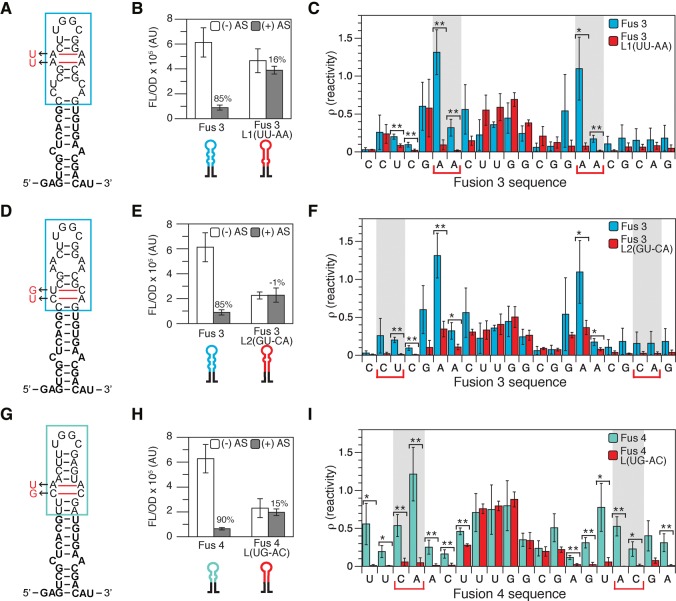FIGURE 3.
Mutations that close sensing hairpin interior loops break attenuator function and decrease hairpin reactivity. (A) In-cell SHAPE-restrained secondary structure prediction of the Fusion 3 hairpin indicating mutations to close the upper interior loop (L1, UU–AA). Boxed region indicates nucleotides shown in the reactivity spectra in C. (B) Functional characterization of Fusion 3 and the Fusion 3 L1 mutant that closes the top interior loop. Average fluorescence (FL/OD) of E. coli TG1 cells with (+ AS) or without (− AS) antisense RNA. Error bars represent standard deviations of nine biological replicates. (C) In-cell SHAPE-Seq reactivity comparison for Fusion 3 and Fusion 3 L1(UU–AA). Reactivity spectra represent an average of three independent in-cell SHAPE-Seq experiments with error bars representing standard deviations at each nucleotide. Shaded regions and colored brackets indicate nucleotides of the mutated interior loop. A Welch's t-test was performed comparing the reactivity at each nucleotide between Fusion 3 and Fusion 3 L1(UU–AA). (*) P < 0.1, (**) P < 0.05. (D–F) As in A–C but for the Fusion 3 L2 mutant that closes the bottom interior loop. (G–I) As in A–C but for the characterization of Fusion 4 and the Fusion 4 L mutant that closes the interior loop.

